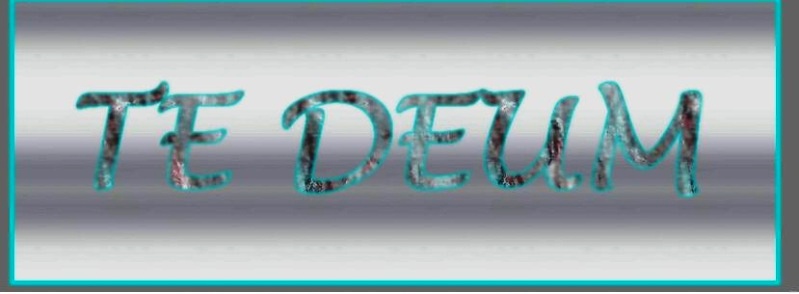THE BUGNINI FILE (Le Dossier Bugnini)
2 participants
Page 1 sur 1
 THE BUGNINI FILE (Le Dossier Bugnini)
THE BUGNINI FILE (Le Dossier Bugnini)
*Note de Javier: Ce sont quelques extraits tirés de THE BUGNINI FILE: A study in ecclesial subversion (Le dossier Bugnini: une étude sur la subversion ecclésiale). Cet ouvrage est écrit en anglais... désolé donc, car je sais que certains d'entre vous ne parlez pas l'anglais.
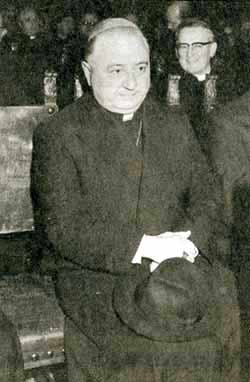
THE BUGNINI FILE: A STUDY IN ECCLESIAL SUBVERSION
by John Kenneth Weiskittel
Hannibal Bugninius, magnus architectus novae liturgiae, non solum Novi Ordinis Missae sed etiam Hebdomadae Sanctae "instauratae" anni 1955, ipse iam vivens colendi Magnum Architectum Universi accusatus est. Quamvis evidentia non sit certa, nihilominus gravia argumenta mentem inducunt ad credendum Bugninium massonem fuisse, et conscienter, tamquam agentem inimicorum Ecclesiae, sacram liturgiam diruisse. Evidentiam huius accusationis auctor loannes Weiskittel adducit, simul cum ea praebens historiam coniurationum societatum secretarum quae ut se inter clerum Ecclesiae Catholicae insinuerent iam abhinc ducenti annos sibi proposuerunt.

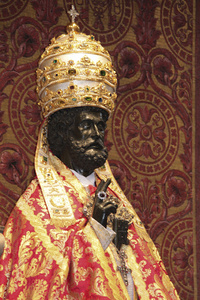
Javier- Nombre de messages : 4271
Localisation : Ilici Augusta (Hispania)
Date d'inscription : 26/02/2009
 Re: THE BUGNINI FILE (Le Dossier Bugnini)
Re: THE BUGNINI FILE (Le Dossier Bugnini)
In April 1976, a book stunned Italian Catholics, and sent shock waves throughout Christendom. The work, printed in Florence and entitled Nel Fumo di Satana. Verso t'ultimo scontro ("In the Smoke of Satan. Towards the Final Clash."), was a penetrating critique on the state of the Church since the Second Vatican Council.
Singled out for direct strike was "Archbishop" Annibale Bugnini, C.M. (1912-1982), the Secretary of the Conciliar Congregation for Divine Worship who had presided over the fateful "reform" of the liturgy. "The reform has been conducted," charged the book, "by this Bugnini who has been unmasked at last; he is indeed what we long expected: a Freemason."
Few allegations made since Vatican II have been more biting -- a top Church official accused of being an enemy of the very Church he is sworn to defend. What makes it all the more credible is the author. Tito Casini was no muckraker, but a writer of good reputation, particularly noted for his works on the Mass.
This revelation did not originate with Casini, however, who was merely reporting an incident from the previous summer, when a priest visited "Pope" Paul VI’s office, plopped on his desk a dossier identifying Bugnini as a Lodge brother, and warned he would go public with the information if action was not taken immediately. Paul appointed Bugnini to the post of Pro - Nuncio of Iran, an assignment as far from scrutiny as was possible, and dissolved the Congregation.
To no one's surprise, this "papal" solution did not rest well with traditionalists, and the threatened disclosures were forthcoming. A month before Casini's blockbuster, Archbishop Marcel Lefebvre declared in his Letter to Friends and Benefactors: "Now, when we hear in Rome that he who was the heart and soul of the liturgical reform is a Freemason, we may think that he is not the only one. The veil covering the greatest deceit ever to have mystified the clergy and baffled the faithful, is doubtless beginning to be torn asunder."
In addition, the June 1976 issue of the Italian publication SI, SI, No, No, and four months later, the October edition of the French journal La Contre--reforme catholique, among others, carried the news.
A SUIVRE...
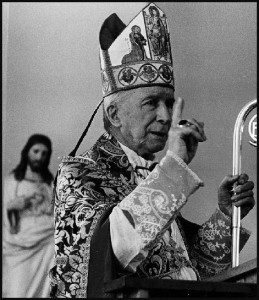 "Now, when we hear in Rome that he who was the heart and soul of the liturgical reform is a Freemason, we may think that he is not the only one. The veil covering the greatest deceit ever to have mystified the clergy and baffled the faithful, is doubtless beginning to be torn asunder." (Archbishop Marcel Lefebvre)
"Now, when we hear in Rome that he who was the heart and soul of the liturgical reform is a Freemason, we may think that he is not the only one. The veil covering the greatest deceit ever to have mystified the clergy and baffled the faithful, is doubtless beginning to be torn asunder." (Archbishop Marcel Lefebvre)
Javier- Nombre de messages : 4271
Localisation : Ilici Augusta (Hispania)
Date d'inscription : 26/02/2009
 Re: THE BUGNINI FILE (Le Dossier Bugnini)
Re: THE BUGNINI FILE (Le Dossier Bugnini)
Javier a cité :
"Now, when we hear in Rome that he who was the heart and soul of the liturgical reform is a Freemason, we may think that he is not the only one. The veil covering the greatest deceit ever to have mystified the clergy and baffled the faithful, is doubtless beginning to be torn asunder." (Archbishop Marcel Lefebvre)
Le voile de la plus grande supercherie ne sera pas déchiré et continuera de rendre OPAQUE toute l'harnaque de Vatican II si on attend que ce voile soit déchiré par Les Lefèbvre, Ottaviani, Bacci et les rigolos du "Coetus internationalis" qui ont joué les opposants mais qui ont fini par tout signé.
C'est la même imbécilité qui fait qu'un de mes neuveux, téléguidé par Barthe, pense que c'est Sa Sainteté, le Bienheureux Benoît XVI qu'il faut supplier de nous expliquer comment le Concile Vatican II n'est pas une rupture mais peut parfaitement s'expliquer "dans la continuité" par l'Herméneutique expliqué par B16. Son copain Marcel et co-religionaire, nous a, de même expliqué, que "La plus grande supercherie" à laquelle il a donné tout son accord...pouvait être interprétée "à la lumière de la Tradition".
Si, comme Javier on continue à prendre les poissons pourris pour nettoyer la poubelle de Vatican II, non seulement on n'avancera pas mais on ne fait que de rajouter soi-même de la confusion à "La plus grande supercherie"

Gérard- Nombre de messages : 2681
Date d'inscription : 17/02/2009
 Re: THE BUGNINI FILE (Le Dossier Bugnini)
Re: THE BUGNINI FILE (Le Dossier Bugnini)
Meanwhile, Bugnini (pronounced Boo nyee' nee], who vehemently denied ever having set foot in a lodge, was getting acclimated to life in the Islamic country where he was to remain until shortly before his death. The controversy soon abated and was forgotten, but, as he writes in his memoirs, there were some intent on beating a "dead horse":
"The "bomb" thus fizzled out, but in the ensuing years there was still a desire, especially on the part of the authorities, to conduct a thorough examination of the charges. It was not possible, after all, simply to let doubts, hesitations, and suspicions stand unchallenged; justice and a love of truth [sic] could not accept that".
V. Levi's denial, "Riflessioni di fine settirnana," L'Osservatore Romano, October 10,1976, elicited further charges in Si, Si, No, No. (The question arises of how such a poisonous, anti-conciliar publication, filled with lies and calumnies, could have prospered, even if directed by a priest, at Grottaferrata, so close to Rome.)
But last year, a decade after the death of the much maligned "archbishop," signs of life have been detected in the old nag, and the bomb is heard ticking again. An Italian-based Conciliar magazine, 30 Days, raised the issue over the summer. A twelve page section, intriguingly entitled "Dossier: Freemasonry and the Application of Liturgical Reform," promised to answer the controverted question. Did it?
Code Name: "Buan"
"Dear Buan [alleged Masonic code name of Bugnini — JKW] ," the letter, dated July 14, 1964, began:
[W]e inform you of the task that the Council of Brothers has established for you in agreement with the Grand Master and the Princes to the throne and we charge you:.,. to spread de—Christianization by confusing rites and languages and to set priests, bishops and cardinals against each other. Linguistic and ritualistic babel means victory for us, since linguistic and ritual unity has been the strength of the Church...Everything must happen within a decade.
An incriminating document to be sure, perhaps damning. But even more so was the reply allegedly made on July 2, 1967, by Bugnini:
"Peerless Grand Master...the steps towards deconsecration are being taken rapidly. Another Instruction has been issued which went into effect on June 19 last. By now we can claim victory, as die vernacular is sovereign in the whole of the liturgy, even in the most essential parts...There is maximum freedom of choice in the various formularies, allowing for even personal initiative and...chaos...In brief, I believe I have sown the seeds of maximum license with the document, according to your instructions. I had to fight bitterly and make use of every wile to have it approved by the Pope, in the face of my enemies in the Congregation for Rites. Fortunately for us, we won immediate backing from our friends and brothers in the Universa laus, who are loyal. I thank you for the sum sent and in the hope of seeing you soon, I send you my embrace. Your Brother Buan".
A SUIVRE...

An Italian-based Conciliar magazine, 30 Days, raised the issue over the summer. A twelve page section, intriguingly entitled "Dossier: Freemasonry and the Application of Liturgical Reform," promised to answer the controverted question.

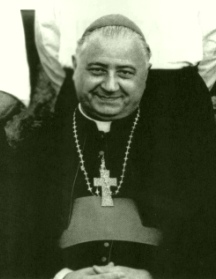 "Dear Buan [alleged Masonic code name of Bugnini — JKW] ," the letter, dated July 14, 1964, began:
"Dear Buan [alleged Masonic code name of Bugnini — JKW] ," the letter, dated July 14, 1964, began: [W]e inform you of the task that the Council of Brothers has established for you in agreement with the Grand Master and the Princes to the throne and we charge you:.,. to spread de—Christianization by confusing rites and languages and to set priests, bishops and cardinals against each other. Linguistic and ritualistic babel means victory for us, since linguistic and ritual unity has been the strength of the Church...Everything must happen within a decade.

Javier- Nombre de messages : 4271
Localisation : Ilici Augusta (Hispania)
Date d'inscription : 26/02/2009
 Re: THE BUGNINI FILE (Le Dossier Bugnini)
Re: THE BUGNINI FILE (Le Dossier Bugnini)
And what does the article's author, Andrea Tornielli, think of the documents ? He at first voices the same uncertainty that many would have in evaluating them:
Are these documents — highly compromising for the man involved, who always denied any contact with Freemasonry — authentic or forgeries? It is impossible to know since the letters were typewritten, then photocopied by a mysterious "mole" said to have leaked them to certain bishops and cardinals, including the Archbishop of Genoa, Cardinal Giuseppe Siri and the Prefect of the Apostolic Signatura, Dino Staffa. If they are authentic, these letters denote a deliberate attempt to erode Catholic doctrine and liturgy from the inside. But they might also be forgeries, cunningly leaked by someone eager to create rival "factions" within the Curia. There is no doubt that the wording of the two missives seems too crude and blunt. But the outcome of Bugnini's reforms fully matches the intention expressed in them.
In the course of the study, however, these ambivalent features are neatly, if obliquely, "resolved" to absolve Bugnini, Paul VI, and company from any wrong doing (mention is made of the "valuable diplomatic work" by Bugnini during his exile in Iran, coincidently the same period of time in which the Shah was overthrown by the Ayatollah Khomeini). In fact, before the article is half over the whole issue seems to be forgotten by the writer. Far more space is devoted to examining how the post—Conciliar liturgy switched from Latin to the vernacular than in exploring the Bugnini affair (Tornielli, having reflected that the "reforms" matched the stated intention of the "Dear Buan" letter, could have gone into this in more depth when talking about the Conciliar liturgy). Not that the discussion is uninteresting. Quite the contrary, for the material covered includes incidents from Bugnini's earlier career, as well as his working relationship with Paul VI. Tornielli writes:
Immediately after the Second World War, Fr. Annibale Bugnini was Secretary of the Liturgical Commission set up by Pius XII to shape the reform of the Holy Week rites. But his reformist bent was of earlier. In 1944 he had asked Msgr. Arrigo Pintonello to translate certain texts on renewal of the liturgy written by German Catholics and Protestants...


 Are these documents — highly compromising for the man involved, who always denied any contact with Freemasonry — authentic or forgeries? It is impossible to know since the letters were typewritten, then photocopied by a mysterious "mole" said to have leaked them to certain bishops and cardinals, including the Archbishop of Genoa, Cardinal Giuseppe Siri and the Prefect of the Apostolic Signatura, Dino Staffa. If they are authentic, these letters denote a deliberate attempt to erode Catholic doctrine and liturgy from the inside. But they might also be forgeries, cunningly leaked by someone eager to create rival "factions" within the Curia. There is no doubt that the wording of the two missives seems too crude and blunt. But the outcome of Bugnini's reforms fully matches the intention expressed in them.(Andrea Tornielli)
Are these documents — highly compromising for the man involved, who always denied any contact with Freemasonry — authentic or forgeries? It is impossible to know since the letters were typewritten, then photocopied by a mysterious "mole" said to have leaked them to certain bishops and cardinals, including the Archbishop of Genoa, Cardinal Giuseppe Siri and the Prefect of the Apostolic Signatura, Dino Staffa. If they are authentic, these letters denote a deliberate attempt to erode Catholic doctrine and liturgy from the inside. But they might also be forgeries, cunningly leaked by someone eager to create rival "factions" within the Curia. There is no doubt that the wording of the two missives seems too crude and blunt. But the outcome of Bugnini's reforms fully matches the intention expressed in them.(Andrea Tornielli)
Javier- Nombre de messages : 4271
Localisation : Ilici Augusta (Hispania)
Date d'inscription : 26/02/2009
 Re: THE BUGNINI FILE (Le Dossier Bugnini)
Re: THE BUGNINI FILE (Le Dossier Bugnini)
In 1962, Bugnini, who was Secretary of the Pontifical Preparatory Commission on the Liturgy, suffered what he called "my first exile," when first, the Commission's head, Cardinal Arcadio Larraona, dismissed him, and then Pope John XXIII "relieved [him| of his post as teacher of Liturgy at the Pontifical Pastoral Institute of the Lateran University."
An unidentified "elderly prelate" told 30 Days: "They got rid of the secretary because he wanted to change things that were not to be touched [italics added — JKW] and especially because he was not fit tor the task."
The "exile" would be brief, however, and Bugnini would later be able to state: "I was a faithful executor of the wishes of Paul VI and of the Council." At times, though, it appeared that Paul VI was the faithful executor of Bugnini's wishes. Tornielli recalled how in 1967 the "pontiff" requested (through the Vatican Secretariat of State) that "daily and feastday missals should always contain, if in a smaller font, the Latin text alongside the vernacular translation." This intervention was rejected for "technical reasons." Why? The answer is supplied by Paul's loyal innovator, Annibale Bugnini: "The principle, good in itself, ran into enormous difficulties: the excessive size of liturgical books, technical difficulties, especially for certain countries that do not even use Latin characters...." In the end, the latter position won out.
This episode is enlightening for a number of reasons. From the standpoint of the "reformers," the faster Latin was jettisoned, the faster their novel lex orandi could fully replace the real Catholic liturgy. Since an all-vernacular new "Mass" was the ultimate goal, and ancient, venerable Latin prayers were cast aside to make way for modern ones (which had, at best, only a tenuous relationship with former traditional orations), why should these liturgical editors even consider the additional fuss and expense involved with publishing bilingual volumes ? If the whole purpose of the "reform" was to dispense with Latin completely, why bother to include it in the new sacramentaries at all ?
As for Paul VI's reaction, it was the subterfuge typical of Conciliar "popes" in every area of religious life. Despite the fact that he lived for more than a decade after this intervention, "Pope" Montini did nothing to halt the liturgical revolution. Far from making anything resembling a comeback, Latin was pushed further and further into the background, a policy that John Paul II — his televised Latin Christmas "Masses" notwithstanding— has done nothing to change.
 As for Paul VI's reaction, it was the subterfuge typical of Conciliar "popes" in every area of religious life. Despite the fact that he lived for more than a decade after this intervention, "Pope" Montini did nothing to halt the liturgical revolution.
As for Paul VI's reaction, it was the subterfuge typical of Conciliar "popes" in every area of religious life. Despite the fact that he lived for more than a decade after this intervention, "Pope" Montini did nothing to halt the liturgical revolution.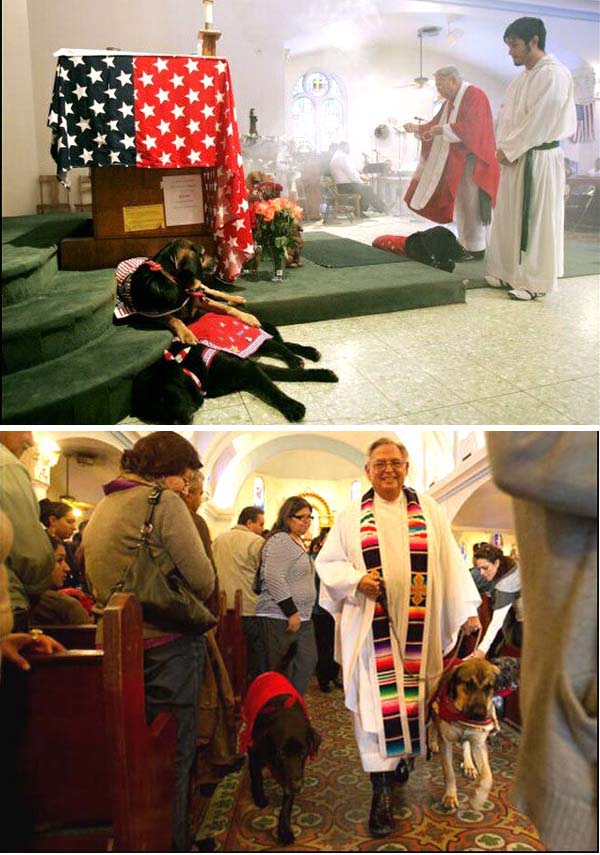 From the standpoint of the "reformers," the faster Latin was jettisoned, the faster their novel lex orandi could fully replace the real Catholic liturgy. Since an all-vernacular new "Mass" was the ultimate goal, and ancient, venerable Latin prayers were cast aside to make way for modern ones (...), why should these liturgical editors even consider the additional fuss and expense involved with publishing bilingual volumes ? If the whole purpose of the "reform" was to dispense with Latin completely, why bother to include it in the new sacramentaries at all ?
From the standpoint of the "reformers," the faster Latin was jettisoned, the faster their novel lex orandi could fully replace the real Catholic liturgy. Since an all-vernacular new "Mass" was the ultimate goal, and ancient, venerable Latin prayers were cast aside to make way for modern ones (...), why should these liturgical editors even consider the additional fuss and expense involved with publishing bilingual volumes ? If the whole purpose of the "reform" was to dispense with Latin completely, why bother to include it in the new sacramentaries at all ? 
Javier- Nombre de messages : 4271
Localisation : Ilici Augusta (Hispania)
Date d'inscription : 26/02/2009
 Re: THE BUGNINI FILE (Le Dossier Bugnini)
Re: THE BUGNINI FILE (Le Dossier Bugnini)
The 30 Days feature also includes a brief interview with Bugnini's friend and liturgical collaborator "Father" Gottardo Pasqualetti, who helped him edit his memoirs and supplied a foreword for them. In response to a question from Andrea Tornielli concerning the details of the Iran exile, he states: "It was a real tragedy for Bugnini. The most painful thing about it for him was that he was removed without being told the reasons for it. Even when the Pope [sic] gave him an audience no mention was made of it. According to Bugnini the decision was brought about by a conspiracy based on forged documents concerning his alleged Masonic membership".
Pasqualetti dismisses the suggestion that Paul VI signed the notorious General Instruction to the New Order of the Mass without carefully reading it. While allowing for the possibility "that something slipped the Pope's attention [such as the heretical Article 7, perhaps?— JKW]," he emphasizes the fact that Bugnini and Paul VI "spent many hours together revising all the texts."
Despite such close collaboration, Pasqualetti maintains that part of the reason for Bugnini's exile had to do with pressure the Vatican was experiencing over the Novus Ordo Missae, and that afterwards a campaign was launched to undo the secretary's work.
"In 1975," he says, "not only was the former secretary of the Consilium ousted, but every trace of him was obliterated and what he had created was destroyed. Still today, when prelates in the Congregation for Divine Worship speak of the years of the liturgical reform, they avoid mentioning Bugnini".
And Tornielli concludes his article on a similar note, writing how Bugnini's departure supposedly signaled a marked contrast from the earlier "glory years" of liturgical "reform": "Something went irremediably wrong after that period. It was Paul VI, once so trusting of Bugnini, who ousted him in the years after the Council. The reform could be said to have well and truly come to an end."
(...)

 Pasqualetti dismisses the suggestion that Paul VI signed the notorious General Instruction to the New Order of the Mass without carefully reading it. While allowing for the possibility "that something slipped the Pope's attention [such as the heretical Article 7, perhaps?— JKW]," he emphasizes the fact that Bugnini and Paul VI "spent many hours together revising all the texts."
Pasqualetti dismisses the suggestion that Paul VI signed the notorious General Instruction to the New Order of the Mass without carefully reading it. While allowing for the possibility "that something slipped the Pope's attention [such as the heretical Article 7, perhaps?— JKW]," he emphasizes the fact that Bugnini and Paul VI "spent many hours together revising all the texts."
Javier- Nombre de messages : 4271
Localisation : Ilici Augusta (Hispania)
Date d'inscription : 26/02/2009
 Re: THE BUGNINI FILE (Le Dossier Bugnini)
Re: THE BUGNINI FILE (Le Dossier Bugnini)
The Occupied Church
Unlike the 30 Days spread, the present article will not flinch when confronted with the issue. Although Bugnini's involvement with secret societies may be forever shrouded in the darkness associated with those cabals, it is still possible to make educated inferences based upon what is known.
It is far too important for Catholics to be able to identify the contours of the shadow army that is waging a relentless war against the Church to dismiss such allegations without a careful consideration of these facts.
So what is to be concluded about Bugnini? While many reputable sources readily believed his guilt, the charges did not go unchallenged. "Was he a Mason, or wasn't he ? (Perhaps only his Grand Master, assuming he had one, knew for sure.) Was he sincere in his denial or merely covering his tracks ? Bugnini's secret — if there was one — went with him to the grave. Given the lack of a public confession on his part, and a similar lack of uncontested evidence linking him to the group, the natural conclusion is to declare the issue stalemated, and leave it at that.
It is true that, aside from the disputed dossier, there is no direct proof of Bugnini's involvement with the Lodge. Still, there are other avenues of investigation that can be made. If his membership cannot be definitively proven, there is substantial indirect evidence to link him with the Lodge or, at least, to demonstrate that what he implemented bears a striking resemblance to the stated goals of the Church's declared enemies.
In 1975, the French author Jacques Ploncard d'Assac wrote a book with the provocative title, L'Eglise Occupee (The Occupied Church). The thesis of the study is explained by him as follows:
"If one succeeds in demonstrating that all the 'novelties' which trouble the Church today are nothing but past errors which have repeatedly been condemned by Rome, one will be able to conclude that the Church, at this end of the 20th century, is occupied by a strange sect, exactly as a country is able to be occupied by an enemy army [italics added]."
He begins a chapter entitled "A Secret Society Within The Church?" by stating:
The idea of infiltrating the Church, in order to sway its doctrine and control its hierarchy, strange as it may seem, has never ceased to obsess the various occult sects. The best—known attempts of accomplishing this end were those of the "Illuminati" of Bavaria in the 18th century, and that of the Alta Vendita in the 19th.
In 1906 there appeared in Paris the French translation of a book by the Italian author Antonio Fogazzaro entitled Il Santo — The Saint. Only mediocre by novelistic standards, the book would undoubtedly have passed into oblivion were it not that it served to propagate the tenets and methods of the modernist sect.
And these were astonishing enough; the plan consisted in nothing less than establishing a secret society [italics added] within the very bosom of the Church, in view of seizing control of the highest positions in the hierarchy, so as to bring about an evolution of the Church in conformity with the ideas of the modern age.
(...)

 So what is to be concluded about Bugnini? While many reputable sources readily believed his guilt, the charges did not go unchallenged. "Was he a Mason, or wasn't he ? (Perhaps only his Grand Master, assuming he had one, knew for sure.) Was he sincere in his denial or merely covering his tracks ? Bugnini's secret — if there was one — went with him to the grave. (...) If his membership cannot be definitively proven, there is substantial indirect evidence to link him with the Lodge or, at least, to demonstrate that what he implemented bears a striking resemblance to the stated goals of the Church's declared enemies.
So what is to be concluded about Bugnini? While many reputable sources readily believed his guilt, the charges did not go unchallenged. "Was he a Mason, or wasn't he ? (Perhaps only his Grand Master, assuming he had one, knew for sure.) Was he sincere in his denial or merely covering his tracks ? Bugnini's secret — if there was one — went with him to the grave. (...) If his membership cannot be definitively proven, there is substantial indirect evidence to link him with the Lodge or, at least, to demonstrate that what he implemented bears a striking resemblance to the stated goals of the Church's declared enemies. 
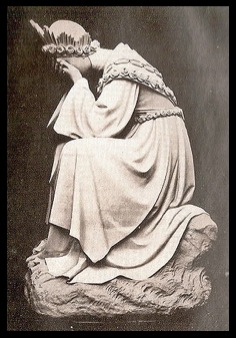 The idea of infiltrating the Church, in order to sway its doctrine and control its hierarchy, strange as it may seem, has never ceased to obsess the various occult sects. The best—known attempts of accomplishing this end were those of the "Illuminati" of Bavaria in the 18th century, and that of the Alta Vendita in the 19th. (...) the plan consisted in nothing less than establishing a secret society [italics added] within the very bosom of the Church, in view of seizing control of the highest positions in the hierarchy, so as to bring about an evolution of the Church in conformity with the ideas of the modern age.
The idea of infiltrating the Church, in order to sway its doctrine and control its hierarchy, strange as it may seem, has never ceased to obsess the various occult sects. The best—known attempts of accomplishing this end were those of the "Illuminati" of Bavaria in the 18th century, and that of the Alta Vendita in the 19th. (...) the plan consisted in nothing less than establishing a secret society [italics added] within the very bosom of the Church, in view of seizing control of the highest positions in the hierarchy, so as to bring about an evolution of the Church in conformity with the ideas of the modern age. 
Javier- Nombre de messages : 4271
Localisation : Ilici Augusta (Hispania)
Date d'inscription : 26/02/2009
 Re: THE BUGNINI FILE (Le Dossier Bugnini)
Re: THE BUGNINI FILE (Le Dossier Bugnini)
Planned Subversion by Christ's Enemies
The modern movement to eradicate the Roman Catholic Church can be traced to the mid-1700s, when a group of fervent and vocal apostates came together during the so-called Enlightenment.
While "freethinkers" could be found at that time throughout Europe ridiculing every Church teaching and practice, the foul center from which the attacks emanated was France, particularly in those false intellectuals responsible for writing and editing the infamous Encyclopedie (or, in English, Encyclopedia). The guiding light of the Encyclopaedists was one Francois Marie Arouet, better known to the world by his nom de plume — Voltaire.
Like many of the Encyclopaedists, Voltaire was a Freemason. For fifty years he invariably closed his letters to fellow radicals with the motto, "ecrasons nous l'infame" ("let us crush the wretch" — meaning defeat Christ and His Church). This infernal hatred of Catholicism to which, nevertheless, he nominally adhered, wedded to literary genius, led the celebrated Catholic writer, Jacques Cretineau-Joly to describe him as "the most perfect incarnation of Satan the world ever saw."
The following incident involving Voltaire is related by Monsignor George Dillon: "A lieutenant of police once said to him that, notwithstanding all he wrote, he should never be able to destroy Christianity. 'That is exactly what we shall see' [italics added], he replied."
The attacks of Voltaire and the Encyclopaedists had a profound effect on the intellectual climate of France, and helped spark the social fomentation that would culminate in the great bloodletting of the 1789 Revolution.
Their contribution in so advancing the aims of Freemasonry has not been lost on the Lodge. Father Clarence Kelly, in his study Conspiracy Against God & Man, quotes from an address given at the 1904 Congress of the Grand Orient as follows:
In the eighteenth century the glorious line of Encyclopaedists formed in our temples a fervent audience which was then alone in invoking the radiant device as yet unknown to the crowd: "Liberty, Equality, Fraternity." The revolutionary seed quickly germinated amid this elite. Our illustrious Freemasons d'Alembert, Diderot, Helevcius, d'Holbach, Voltaire, Condorcet, completed the evolution of minds and prepared the new era. And when the Bastille fell, Freemasonry had the supreme honour of giving to humanity the charter (i.e., the Declaration of the Rights of Man) which it had elaborated with devotion. (Applause.)
And yet, despite the scarlet sea they helped precipitate, these antichrists never failed to hide behind pious affectations or veiled language when the occasion warranted such duplicity. Monsignor Dillon writes of Voltaire:
"Voltaire, the most perfect incarnation of Satan the world ever saw. "
He was also, as the school he left behind has been ever since, a hypocrite. Infidel to the heart's core, he could, whenever it suited his purpose, both practice, and even feign a zeal for religion. On the expectation of a pension from the King, he wrote M. Argental, a disciple of his, who reproached him with his hypocrisy and contradictions in conduct. "If I had a hundred thousand men I know well what I would do; but as I have not got them I will go to communion at Easter and you may call me a hypocrite as long as you wish." And Voltaire, on getting his pension, went to communion the year following...
 "Voltaire, the most perfect incarnation of Satan the world ever saw. " (Jacques Cretineau-Joly)
"Voltaire, the most perfect incarnation of Satan the world ever saw. " (Jacques Cretineau-Joly)
Javier- Nombre de messages : 4271
Localisation : Ilici Augusta (Hispania)
Date d'inscription : 26/02/2009
 Re: THE BUGNINI FILE (Le Dossier Bugnini)
Re: THE BUGNINI FILE (Le Dossier Bugnini)
Following the lead of their mentor, the Encylopaedists were quite skilled in the art of artifice, their impious lies hidden in a forest of ambiguities and code words. Gustave Combes, in his book Revival of Paganism, states that they employed all their ingenuity in veiling their attacks so that the state authorities might not become alarmed or the general reader be on his guard.
One of the most illustrious of the compilers, d'Alembert, speaks of "this secret war" which stealthily undermined that it might better destroy. Naigeon and Condorcet speak of "those insinuating articles" where "one tramples religious prejudices under foot without seeming to do so at all," where "the respected errors" are betrayed systematically by the "weakness of their proofs," where they are staggered by "the proximity of truths which penetrate to the very roots of their falsity."
This all sounds very reminiscent of the Modernists' methods a century later. Although the careful Catholic of today could see through much of the Encyclopedia's mendacity, it nevertheless deceived many in its era. Cornbes writes:
The reader cannot help feeling that atheism taints every line. But on the whole the Encyclopedia is so discreet and good-natured that he feels reluctant to condemn it as subversive unless he reads so attentively that he discovers its true meaning and the savage nature of the attack. Furthermore, this atheism appears in places where the reader would least expect it; for example, under headings that have no bearing on any religious subject. In these scholarly articles, essentially harmless, the Encyclopedia displays its most venomous criticisms of "Christian fanaticism."
But whether its doctrine is expressed stealthily or openly, whether it takes the form of irony or invective, in any case it has but one purpose: to smite Christianity on every flank, to undermine the foundations of civilization without a thought of mercy, to destroy all authority and every sound principle.
To accomplish this purpose, it marshaled all the forces of irreligion that had been secretly spreading through the world during the previous two centuries, and turned to their own account all the charges that had been made against the Church. The Encyclopedia brought into one place all the arguments and refutations by the anti-religious philosophers, forming a vast summa that set itself up triumphantly against the Summa of St. Thomas; a new gospel sprung from the depths of the human mind, which was intended to supplant that Gospel supposedly revealed by God. It was, in fact, to be the herald of a new era which it would bring to the world.
 The Encyclopedia brought into one place all the arguments and refutations by the anti-religious philosophers, forming a vast summa that set itself up triumphantly against the Summa of St. Thomas; a new gospel sprung from the depths of the human mind, which was intended to supplant that Gospel supposedly revealed by God. It was, in fact, to be the herald of a new era which it would bring to the world.
The Encyclopedia brought into one place all the arguments and refutations by the anti-religious philosophers, forming a vast summa that set itself up triumphantly against the Summa of St. Thomas; a new gospel sprung from the depths of the human mind, which was intended to supplant that Gospel supposedly revealed by God. It was, in fact, to be the herald of a new era which it would bring to the world. 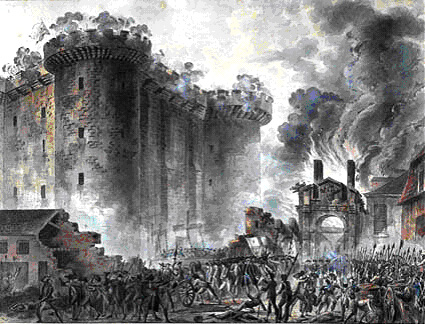

Javier- Nombre de messages : 4271
Localisation : Ilici Augusta (Hispania)
Date d'inscription : 26/02/2009
 Re: THE BUGNINI FILE (Le Dossier Bugnini)
Re: THE BUGNINI FILE (Le Dossier Bugnini)
Corrupting the Faithful through Bad Clergy
The point of this rather lengthy digression is to emphasize that with the Enlightenment Satan's war against Christ moved into a new phase. Through most of the Church's history, a heretic, when exposed, would then openly commence to assail her. But this changed with Voltaire and his disciples. No longer (with a few notable exceptions) would the enemies of the Church launch into frontal attacks against her; henceforth the plan would be to subtly deride her teachings and authority — and, when possible, to internally subvert her.
Instead of rattling off the usual string of vituperations, they would remain like a viper at the bosom of the Church, and, when confronted with their errors, throw up their hands in mock surprise, exclaiming, "Surely, you can't believe I meant that." Then, unless thoroughly exposed, they steadfastly (if falsely) professed the orthodoxy of their beliefs and their undying fidelity with Rome. Just a bit more elucidation on this point in order to show its progression up to Vatican II.
This change was manifested almost immediately. During the French Revolution, when most faithful bishops and priests were going underground to save their heads, a new breed of clergy emerged, who had no scruples about trying to tie the Revolutionary — and utterly un-Catholic — slogan "Liberty, Equality, Fraternity" with the Church. While these "Constitutional clergy," as they were called, made the pretense of loyalty to all things Catholic, the ruse did not last very long. Pope Pius VI suspended them, and forbade the faithful to receive the sacraments from them. As early as 1775, with his first encyclical Inscrutabile, the same pontiff had warned about Masonry's infiltration, not only in the highest levels of civil government, but even into the clerical ranks.
Nine years before this, Pope Clement XIII, in his antirnasonic encyclical, Christianas Reipubliciz Salus, strongly suggested the same: "The enemy of all Good has sown the evil seed in the field of the Lord and the evil has grown rapidly, to such an extent that it threatens to destroy the harvest. It is time to cut it down,"
Pius' immediate successor, Pius VII, seeing the rise of a related secret society, the Carbonari, exposed their duplicity when he wrote: "They affect a special obedience and wondrous zeal for the Catholic faith, and for the person and teaching of Our Lord Jesus Christ, whom they sometimes impiously dare to call the ruler of their society, and their great teacher."
TO BE CONTINUED...
 The Carbonari (charcoal burners) was a secret brotherhood created for the purpose of overthrowing the Italian government.
The Carbonari (charcoal burners) was a secret brotherhood created for the purpose of overthrowing the Italian government.They were bearers of freedom and unity movement. Flourished 1796 in Italy, this groups were very similar to Freemasonry. The name refers to the black gowns, masks and hats, carrying the letter K on them. Like other secret societies of the age, the Carbonari had an initiation ceremony, complex symbols, and a hierarchical organization.

Javier- Nombre de messages : 4271
Localisation : Ilici Augusta (Hispania)
Date d'inscription : 26/02/2009
 Re: THE BUGNINI FILE (Le Dossier Bugnini)
Re: THE BUGNINI FILE (Le Dossier Bugnini)
Nevertheless, despite the Vatican's crackdown on the "Constitutional clergy" (which was perhaps too mild), a pernicious pattern was set, and the enemies saw no reason to abandon it. The revolutionary clerics in France were but the outward manifestation of a larger clandestine movement radiating through all of Europe. Their transformation, in fact, mirrors what was also being propagated in Germany. Bavarian police in 1785 seized and published documents of a radical anti-christian group it had suppressed, the secret Illuminati cult. In those writings, Adam Weishaupt, an apostate ex-university professor, and the leader of the Illuminati, taught a form of "liberation theology" almost two hundred years before it became fashionable in Conciliar circles: Let Christians believe that our Lord Jesus Christ was the great inventor of the Masonic trinomial, "liberty, equality, and frater-nity,"that this is the doctrine He taught, but that it must be understood with the teachings of the sects. Our doctrine is the very divine doctrine Jesus Christ taught His disciples [sic — JKW] and whose intimate and real meaning belongs to the secret discourses of the lodges....[Here we have the cabala.] This doctrine gives the whole human race the means to attain complete freedom....Nobody has opened ways so safe to freedom as our great Jesus of Nazareth.
The suppression of the Illuminati, however, did not spell an end to such activities. In 1846 Pope Pius IX authorized the publication of the documents of the Alta Vendita, which had been confiscated by the Pontifical Government. This group, commonly thought to be the governing body of continental Freemasonry at the time, made the following prediction: "Our ultimate end is that of Voltaire and of the French Revolution — the final destruction of Catholicism, and even of the Christian idea. The work we have undertaken is not the work of a day, nor of a month, nor of a year. It may last many years, a century, perhaps; in our ranks the soldier dies; but the fight goes on..."
What could have stimulated it to have made such a bold long-range forecast? The answer: The commitment to a prolonged infestation of the Church. This Permanent Instruction, as it was called, made it clear to the initiates that to achieve its goal the Lodge must triumph over and utterly destroy the Holy See, because anything short of this would mean "the Christian idea..., if left standing on the ruins of Rome, would be the resuscitation of Christianity later on."
How did the Aha Vendita think it could accomplish such an objective? A key to the scheme involved initiating behind the scenes what today would be called smear (or disinformation) campaigns against the most ardent defenders of the Faith amongst Church hierarchy.
Noting that "a word can sometimes kill a man," the conspirators suggest that meddlesome clergy be dealt with in the following manner: If he is in advance, a declared enemy,...envelope him in all the snares which you can place beneath his feet; create for him one of those reputations which will frighten little children and old women; paint him cruel and sanguinary; recount, regarding him, some traits of cruelty which can easily be engraved in the minds of the people. When foreign journals shall gather for us these recitals [planted, of course, by the Lodge itself—JK"w), which they will embellish in their turn (inevitably because of their respect for truth [sic]), show, or rather cause to be shown, by some respectable fool those papers where the names and the excesses of the personages implicated are related. As France and England, so Italy will never be wanting in facile pens which know how to employ themselves in these lies so useful to a good cause. With a newspaper, the language of which they do not understand, but in which they will see the name of their delegate or judge, the people have no need of other proofs. They are in the infancy of liberalism; they believe in liberals, as later on, they will believe in us, not knowing very well why.-"
TBC...
 Adam Weishaupt, an apostate ex-university professor, and the leader of the Illuminati, taught a form of "liberation theology" almost two hundred years before it became fashionable in Conciliar circles: Let Christians believe that our Lord Jesus Christ was the great inventor of the Masonic trinomial, "liberty, equality, and frater-nity,"that this is the doctrine He taught, but that it must be understood with the teachings of the sects. Our doctrine is the very divine doctrine Jesus Christ taught His disciples [sic — JKW] and whose intimate and real meaning belongs to the secret discourses of the lodges....[Here we have the cabala.] This doctrine gives the whole human race the means to attain complete freedom....Nobody has opened ways so safe to freedom as our great Jesus of Nazareth.
Adam Weishaupt, an apostate ex-university professor, and the leader of the Illuminati, taught a form of "liberation theology" almost two hundred years before it became fashionable in Conciliar circles: Let Christians believe that our Lord Jesus Christ was the great inventor of the Masonic trinomial, "liberty, equality, and frater-nity,"that this is the doctrine He taught, but that it must be understood with the teachings of the sects. Our doctrine is the very divine doctrine Jesus Christ taught His disciples [sic — JKW] and whose intimate and real meaning belongs to the secret discourses of the lodges....[Here we have the cabala.] This doctrine gives the whole human race the means to attain complete freedom....Nobody has opened ways so safe to freedom as our great Jesus of Nazareth. 
Javier- Nombre de messages : 4271
Localisation : Ilici Augusta (Hispania)
Date d'inscription : 26/02/2009
 Re: THE BUGNINI FILE (Le Dossier Bugnini)
Re: THE BUGNINI FILE (Le Dossier Bugnini)
A Freemasonic Altar
Lest there be any mistake, "members" of the Alta Vendita were obliged to make every effort to appear as faithtul Catholics. In mapping out their plan for the destruction of the Catholic Church, the secret masters ot this dark brotherhood taught:
[T]o attain more certainly to that result,...we must not pay attention to those braggarts of Frenchmen, those cloudy Germans, those melancholy Englishmen, all of who imagine they can kill Catholicism, now with an impure song, then with an illogical deduction; at another time, with a sarcasm smuggled in like the cottons of Great Britain, Catholicism has a life much more tenacious than that. It has seen the most implacable, most terrible adversaries, and it has often had the malignant pleasure of throwing holy water on the tombs of the most enraged. Let us permit, then, our brethren of these countries to give themselves up to the sterile intemperance of their anti-Catholic zeal. Let them mock at our Madonnas and our apparent devotion. With this passport we can conspire at our ease, and arrive little by little at the end we have in view [italics added].
Further on, the point is again hammered home:
"If it pleases you, in order the better to deceive the inquisitorial eye, to go often to confession, you are as by right authorized to preserve the most absolute silence regarding these things. You know that the least revelation, that the slightest indication escaped from you in the tribunal of penance, or elsewhere, can bring on great calamities and that the sentence of death is already pronounced upon the revealer, whether voluntary or involuntary."
Here, then, are the methods by which the Church's enemies sought to bring her to nought: feign devotion, but subtly sow seeds of contempt for those in positions of authority, with the aim of subverting her. There is even more to this devilry, for the Permanent Instruction, all the while emphasizing this mock Catholicism, continues:
That reputation will open the way for our doctrines to pass to the bosoms of the young clergy, and go even to the depths of convents. In a few years the young clergy will have, by force of events, invaded all the functions. They will form the council of the Sovereign. They will be called upon to choose the Pontiff who will reign; and that Pontiff, like the greater part of his contemporaries, will be necessarily imbued with the Italian and humanitarian principles which we are about to put into circulation...
TBC...



Javier- Nombre de messages : 4271
Localisation : Ilici Augusta (Hispania)
Date d'inscription : 26/02/2009
 Re: THE BUGNINI FILE (Le Dossier Bugnini)
Re: THE BUGNINI FILE (Le Dossier Bugnini)
But the plot against the Church was, of course, already in full stride. As early as 1806, the Abbé Augustin Barruel, a "papist" priest who was forced to flee France during the Revolution, presented to Pius VII details of the anti-catholic conspiracy's program, which had been obtained from a former member of the sect. His Holiness not only acknowledged their authenticity, but went so far as to warn the faithful by quoting from them. Relevant to the study in question is the following article derived therefrom:
That, on our Italian soil, they had already recruited as members more than 800 ecclesiastics [italics added — JKW], both secular and regular, among whom there were many parsons, professors, prelates, and some bishops and cardinals; and that, as a result, they did not relinquish having a Pope of their own party.
Then in 1845, Pope Gregory XVI's Secretary of State, Cardinal Tommaso Pernetti, revealed in a letter the awful reality:
Our young clergy is already imbued with liberal ideas. ...They have abandoned serious studies. Most of the priests who wiil succeed us in the leading positions are a thousand times more plagued by the liberal vice...; most of them do not know the nature of the things that are taking place and let themselves be influenced by suggestions from which spring forth the great crises of the Church. The same spirit of discord is to be found everywhere among the priests,...They have broken with the past to become new men. The spirit of the sects replaces the true love of neighbor, and individual pride is growing in the dark.
And who, objectively examining these remarks (and the spiritual fallout of Vatican II), cannot instantly see a parallel with the following Alta Vendita command:
"Make men's hearts vicious and corrupt, and you will no longer have Catholics.
Draw away the priests from the altars, and from the the practice of virtue. Strive to fill their time with other matters... it is the corruption of the masses we have undertaken — the corruption of the people through the clergy, and the clergy by us — the corruption which ought one day to enable us to lay the Church in the tomb...
The preceding excerpts from the Church and her enemies make it clear that a protracted war was the intent; a conflict that would ultimately lead to the Church's dissolution. Equally evident is the fact that these infidels would attempt to destroy her from within. And that long before Vatican II they had already made considerable headway in their intrigue.
TBC...
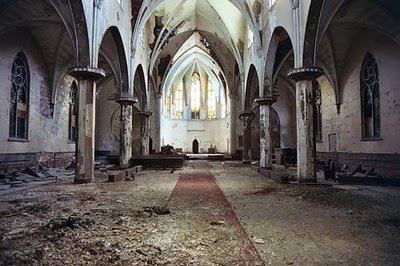

Javier- Nombre de messages : 4271
Localisation : Ilici Augusta (Hispania)
Date d'inscription : 26/02/2009
Page 1 sur 1
Permission de ce forum:
Vous ne pouvez pas répondre aux sujets dans ce forum